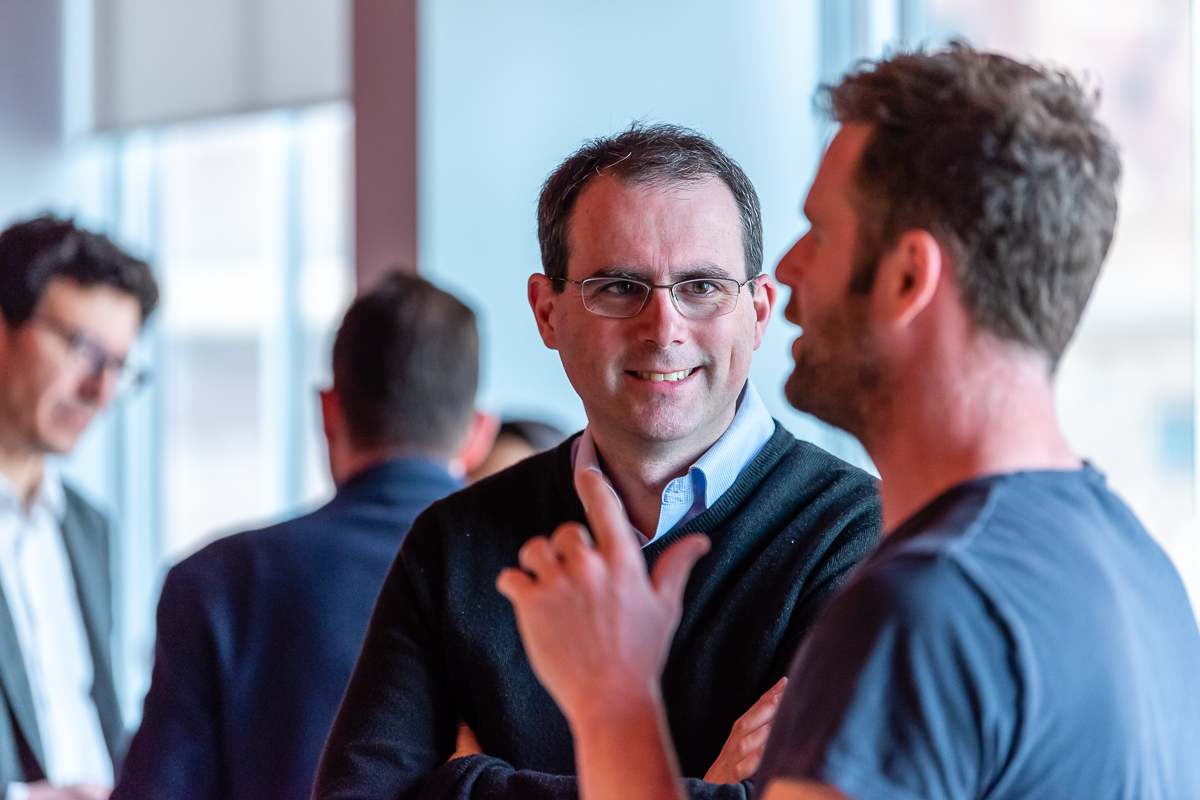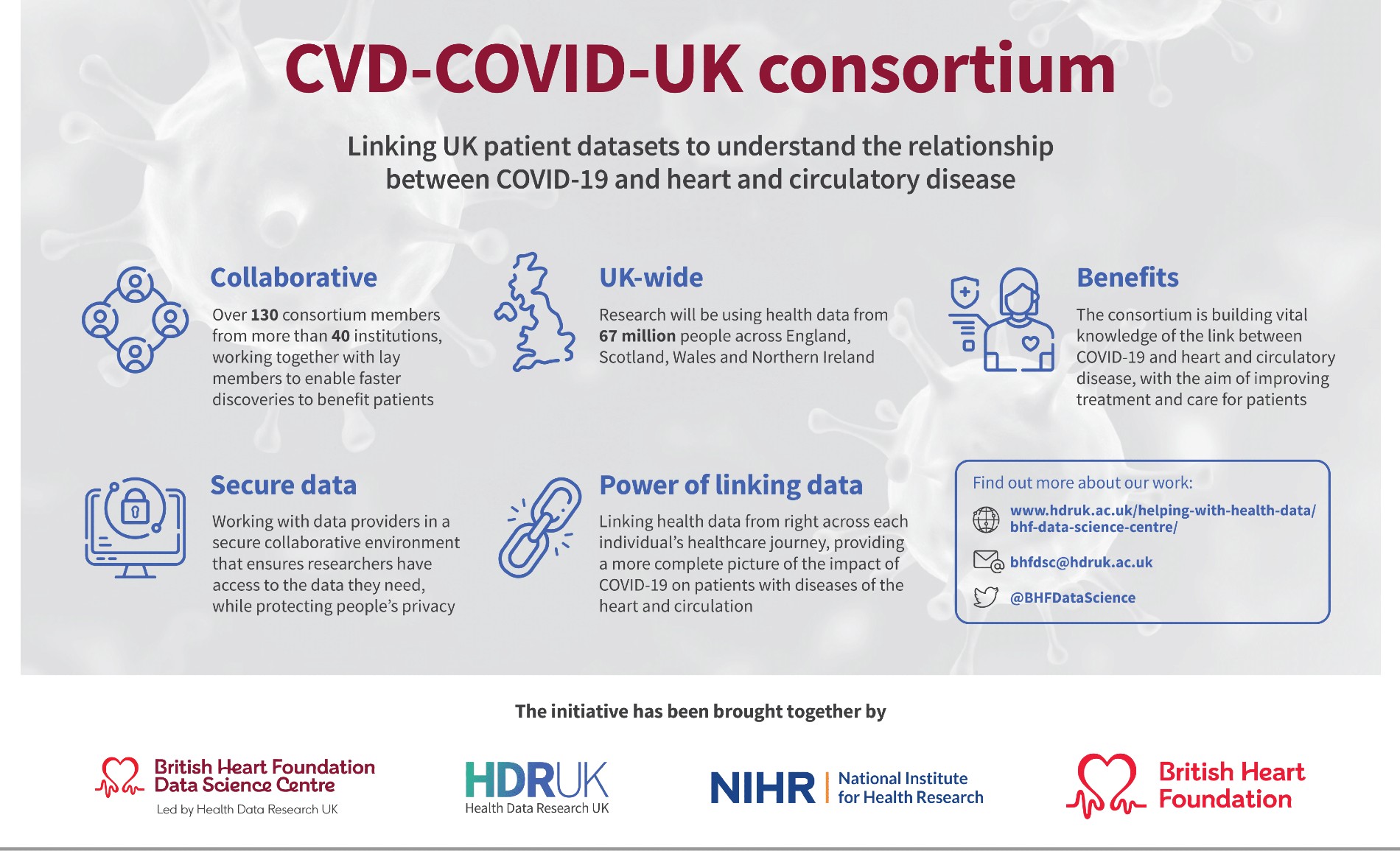Data: What is it good for?
9 April 2021
Author: Lynn Laidlaw, Lay member of CVD-COVID-UK Approvals and Oversight Board.

Lay commentary to accompany the CVD-COVID-UK consortium descriptive paper, “Linked electronic health records for research on a nationwide cohort including over 54 million people in England” (News release on this work here).
The CVD-COVID-UK consortium’s paper summarises a remarkable achievement: the data described covers 96% of the population in England and there is a rigorous governance structure ensuring people’s health information is kept safe and secure. The consortium’s work shows the power of linking data from multiple sources, with GP records, hospital data, COVID 19 laboratory test data and medications dispensed from pharmacies all included. The data linkage also provides more comprehensive information on key details such as sex, age, ethnicity and geographic locations. The unequal way the pandemic has affected certain groups highlights the importance of this aspect.
It has been a huge, collaborative endeavour, involving researchers, data custodians, data analysts, clinicians and people living with heart disease, with a shared goal to understand the relationship between COVID-19 and cardiovascular disease. It is laying the foundations for continued collaboration, removing the siloes that so often exist in research and academia. It is already giving us a more complete picture of the impact COVID-19 has had on people living with diseases of the heart and circulation and whether people who have had COVID-19 are more likely to develop cardiovascular diseases in the future. This resource will enable future, vital research to take place, with the fundamental aim of improving care and treatment for patients.
It’s been a fascinating project to be involved with as a lay member of the Approvals and Oversight Board, who meet to review the requests from approved researchers for access to the data. I am struck by the commitment of the research teams and their willingness to collaborate with colleagues across the UK. But, whilst I can appreciate the ground-breaking nature of the collaboration, as someone living with cardiovascular disease and in the extremely clinically vulnerable group, I do have some questions more broadly about what data we collect and how people living with cardiovascular disease can influence what we use this data for.
“We don’t collect data from the patients’ point of view” is a quote I’ve previously heard at a conference which stands out for me. How much more rich would the data be if patients were able to input information such as their self-management strategies? We don’t routinely collect data on quality of life and functional status, yet we know that they are of prime importance to patients. Indeed, there is an increasing focus on long COVID as well as mortality from COVID. How do we decide, and who gets to decide, what research question the data will be used to answer – do we concentrate on the more common cardiovascular diseases at the expense of the rare and atypical? How do we make time for patient and public involvement in the current fast-paced research environment? It’s all of our data and we need to ensure that what it’s used for aligns with the concerns and priorities of patients and the public – there is work to do in this regard.
Perhaps the most important question for me is how do we bring the data and its outputs to life and provide a sense check. Does what the data tells us resonate with the experiences of people living with cardiovascular disease? I have come to appreciate the utility of big data but have we paused to ask, what is it good for and by inference what does it miss? We need qualitative work to sit alongside the big data, to provide the human stories that we can connect with on an emotional level. Let’s ensure that people’s lived experience of cardiovascular disease is respected, to make us more than a data point.



